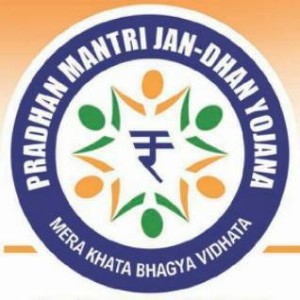 In India, cash still rules. 41% of India’s households are unbanked and credit card penetration is a measly ~2% (debit card penetration is much healthier at ~33%). The situation is similar on the retailer side, where only
In India, cash still rules. 41% of India’s households are unbanked and credit card penetration is a measly ~2% (debit card penetration is much healthier at ~33%). The situation is similar on the retailer side, where only
There are several trends/ initiatives (described below) under way that will transform the financial landscape in the country. Over the coming years, we are set to see a sharp rise in debit card penetration, a shift of banking transactions from offline to online, a greater adoption of electronic payments and greater use of mobiles for conducting electronic transactions. These developments present large opportunities for players operating in the broad mobile money ecosystem.
Pradhan Mantri Jan Dhan Yojna (PMJDY) – The long-term vision of PMJDY is to lay the foundation of a cashless economy and provide universal access to banking facilities. In the immediate term, facility of basic banking accounts that come with a RuPay debit card (among other benefits such as inbuilt accident insurance and overdraft facility of Rs5,000 after 6 months) is being extended to the unbanked citizens.
National Unified USSD Platform – NUUP aims to leverage USSD (Unstructured Supplementary Service Data; a communication protocol for GSM), for extending banking services on even basic telephones. While the interactive SMS-based system allows even credit and debit card transactions, the current plan is to restrict USSD to basic banking services. These include funds transfer, PIN change, and payment of low-value bills among others. Users will be charged Rs1.5 per USSD session. While the NUUP has been in the works for some time, now that all telecom operators have signed agreements with the National Payments Corporation of India, it should finally take off.
Payments banks are envisaged as niche banks aimed to further financial inclusion. These banks will offer limited products such as collecting deposits and remitting funds, but will have a widespread network particularly in remote areas. Interesting to note, the RBI intends to allow telcos to serve as payment banks,
since they already have a wide distribution network and customer reach. This presents an attractive opportunity for telcos to leverage their existing mobile money products (e.g., Airtel Money and Vodafone M-Pesa). Thus far, these
products have had limited success because these digital wallets can only be used for recharges, bill payments, etc., but cash out / cash transactions is / are prohibited.
Bharat Bill payment system (BBPS) India already has a number of players in the payments space. Currently, each payments player needs to tie up with each of the bill generators / sellers individually. This means that the usability of a payment platform or wallet is limited to sellers, which have such tie-ups in place. The proposed BBPS seeks to remove this inefficiency, by creating a layer between sellers / bill generators and existing payment players (which will become Bharat Bill Payment Operating Units (BBPOUs)). Any BBPOU will be able to facilitate payment to any seller on the BBPS platform and can thus potentially become the single point of contact for all bill payment requirements. Once in operation, the BBPS will effectively integrate the payments space and will substantially increase the usefulness and value of digital wallets.
Currently, top 20 cities alone generating Rs6,223 bn in bill payments annually, the move toward digital money from the largely current cash/ cheque based transactions.